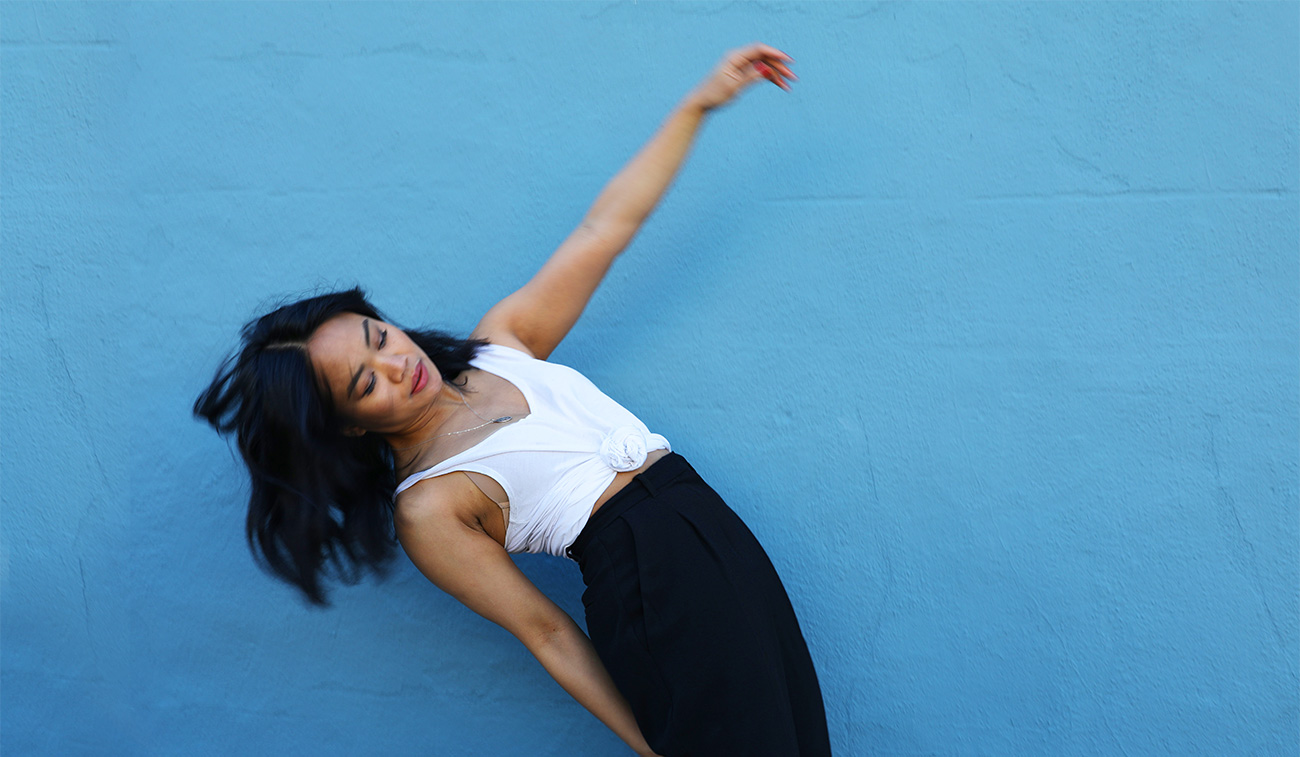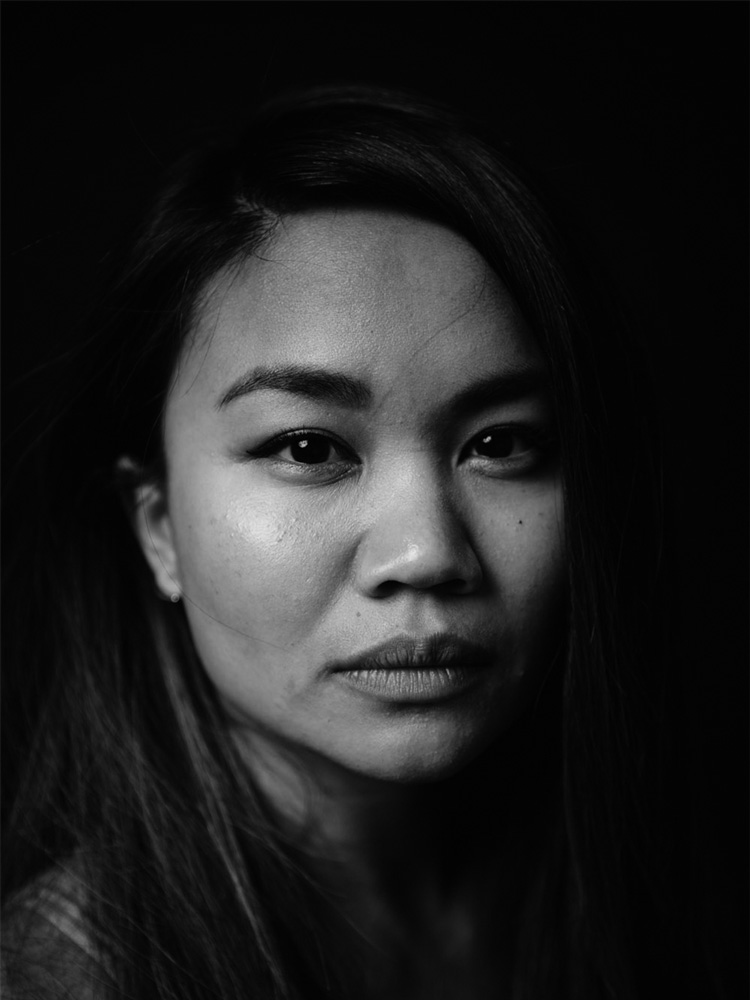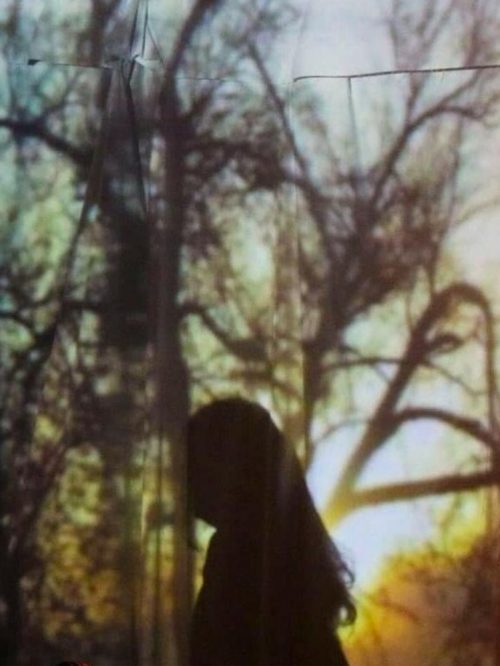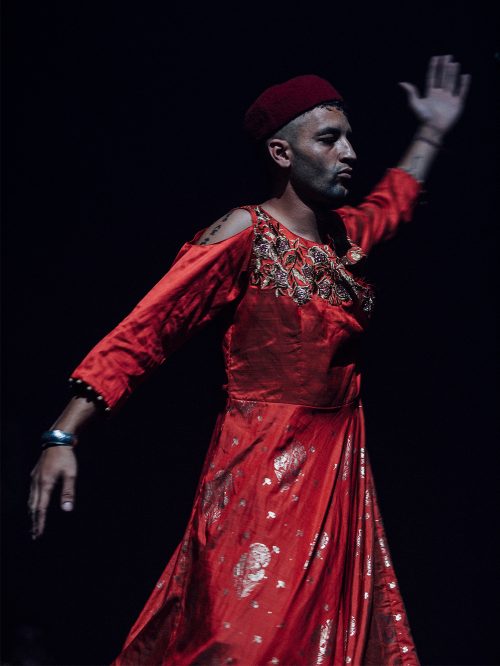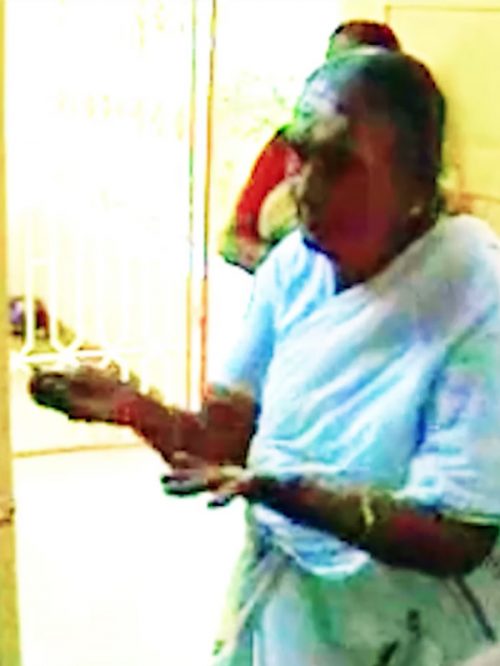without explanation
three
Remember When
love letters to loved ones
3 decades
remembering
this is for you
Canon of Community
epigraph.
“The very serious function of racism… is distraction. It keeps you from doing your work. It keeps you explaining, over and over again, your reason for being… None of that is necessary.”
Toni Morrison, A Humanist View [1]
Inspired by the practice of not explaining or proving one’s (non-white) self over and over again, I would like my contribution to be empowerment in practice. I will focus primarily on accounts that center and connect Black and brown artists, de-center white supremacist culture, and exclude any explicit reference to whiteness. I want to talk to and about communities to which I belong and cherish, not as any kind of virtue signaling or defense, but as a celebration of liberating and formative moments I am grateful to have experienced.
i. to dazaun
“existence”
performers: dazaun soleyn. natalia. claire. gio cruz. me.
choreographer: dazaun soleyn.
audience: our friends. us. bay area dance communities.
We had our first rehearsal in San Francisco at ODC Dance Commons. The small room on the right with that burnt-mustard tan marley. I remember walking in and seeing the four other dancers you casted. Nat. Gio. Claire. You. Strokes of shades of brown and black and smooth and deep. I remember laughing at something Gio said. Nat was doing bodywork on Claire. You put on some house. We met each other through movement. Our color filled the space, and by the time we left, the space had changed.
I never told you, but when I went home that first day, I cried. Yours was the first project I was hired for in who-the-fuck-knows-how-long-probably-like-decades that had a completely Black and brown cast with a Black choreographer and a Black sound designer.
We forget how heavy our armor is until we can take it off. We forget we have it on at all.
In rehearsals, you played Nina. Black Coffee. Danny Daze. Oh, to hear music that felt good to hear! To be in a studio that felt more like a home. No over-intellectualizing the purpose of sound. No smug practice of de-stabilization exercises against or in lieu of the rhythm in order to “get to something ‘new’ or ‘interesting.’” Just the beat and our bodies. And house. And a feeling. That feeling.
When it came time for the performances, you made pre-show feel like a party. Backstage, Claire, Gio, Nat, and I were stretching and making Boomerangs of ourselves being cute. Meanwhile, Beyoncé’s “Deja Vu” filled Dance Mission Theater as you welcomed audience members to dance with you onstage. And then it was no longer a stage but a dance floor slowly swelling with two-steppers and groovers. The room got warmer. People who came to the show were our friends or friends of friends or strangers who didn’t feel strange. There was no space to ‘other’ us because you had already filled it with so much us.
Also, yes to that pre-show playlist.
Speaking of music, can we talk about that first section in the piece? Whew. Shout to Chris for that score. You, Claire, Nat, and I were lying down topless, our stomachs to the floor. Gio, standing, facing upstage. The first sound was a repeating high-pitched note that pierced the space and activated a sway in Gio. Then a deep pulse entered, full and steady. Increasing in volume but slightly muffled as if it were coming from down in a basement. The bass somehow beneath the ground our ears were pressed against. Our breaths, Gio’s jack. His bounce. Our backs. Then slowly from his even, edgeless, looped undulations came bursts of expansive, syncopated movement. Sometimes it was a thrown limb that evolved into a ripple through his spine, or a sharp turn led by a look and followed by his bladed hands cutting through space then stopping suddenly. Wrists flexed. Suspended. Open hips to a wave to a stop then a go. Stop. Throw. Breathe. Stay. Bounce. Go.
What a relief not to have to explain ourselves to ourselves. What a joy to move with you.
ii. to samahang modern
“modern love”
performers: ucla samahang modern.
choreographers: many.
audience: ucla alumni. friends. family.
Samahang Modern, my beloved UCLA hip-hop team, I love you.
You with a name that is no one person’s name. You, with a name that is an idea lived.
Samahang (or Samahán). A collective. Community.
‘Modern,’ not in reference to a Western, Eurocentric dance style, but to describe present-day American-Pilipinx dance. You, one suite of many that make up Samahang Pilipino’s Pilipino Culture Night. PCN: one of three collectives within Samahang. The other two: SPEAR a.k.a. Samahang Pilipino Education and Retention, and SPACE, a.k.a. Samahang Pilipino Advancing Community Empowerment.
Isang bansa.
Love doesn’t happen in a vacuum.
So much of why I love you, Samahang Modern, has nothing to do with the actual dancing. Or maybe, more precisely, I fell in love with the dancing because of everything surrounding it.
So much of love is how we remember it.
It was my freshman year, and I was having a shit day. I saw a SPEAR flyer on a table on Bruin Walk where the group was promoting its peer counseling services. I, being the angsty, self-absorbed teen that I was, signed up for a session.
I remember Emerson, my SPEAR counselor, with his soft voice, big eyes, and swooshy jet-black hair. Emerson listened attentively to my existential gripes about early-morning classes, missing dance, wanting more from the college experience and my God I was obnoxious. When I finally took a breath, Emerson held that silence and me in it. Then he told me about Samahang Modern, a hip-hop dance company here on campus. He introduced me to Dennis, the Samahang coordinator that year and an influential dance figure that would end up leaving a lasting impression on my entire dance career. Not to be hyperbolic.
I remember my eyes widening, seeing the sea of Pilipinx students at the outdoor audition. I’m reminded of The Filipino Community Center in Santa Maria.
I remember getting that email. I had made the team.
During rehearsal breaks, I’d watch with admiration as Dennis, Michelle, and Ira talked and laughed together. They were so cool and confident and comfortable. Yes, yes, magnetic performers, of course, but also refreshingly unbothered. Happy to be together.
I remember our all-day mandatory run-thrus with the entire PCN cast. We had no mirrors and no sprung floors. What we did have was a really heavy boombox, with “chrome” red accents, that weighed fifteen pounds and took 10 D batteries to power.
We’d sit on the concrete stage in Bruin Plaza and take turns sharing our works in progress. Tinikling, Maria Clara with their parasols, Binasuan with their water-filled glasses, Igorot with their costumes that made me blush, skits by the actors that made us all laugh. Collectives within collectives.
A space to be free in a place that felt safe in a world that is neither.
I don’t need to imagine what empowered performance spaces can look like. They were where we were.
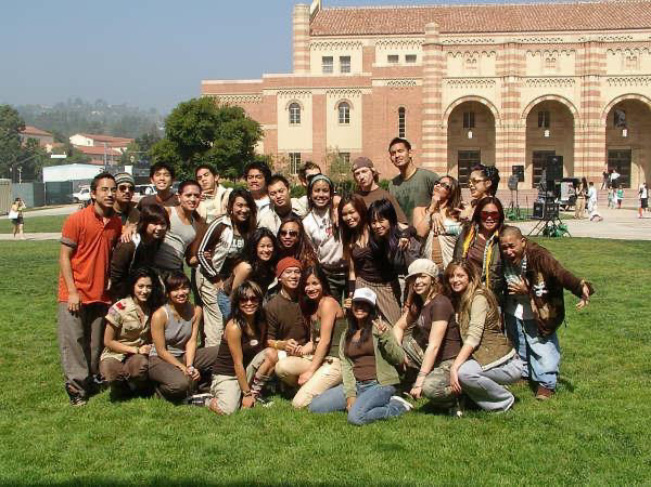
All these ways I remember you, Samahang Modern, are why I love you.
So much of dance is not dance.
Thank you, Samahang Modern, for giving me community.
Thank you for giving me my best friends, Josephine and Nelson.
Thank you for loving me back.
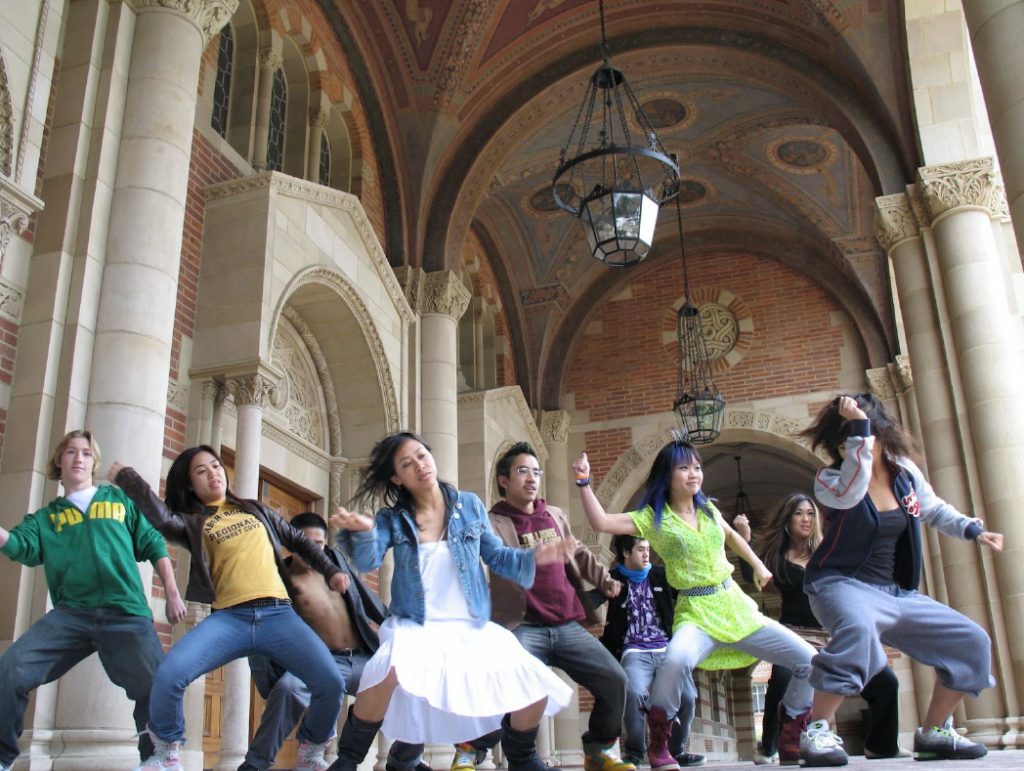
iii. to mom
“gloria”
performers: my mom. the filipino community center of santa maria.
audience: me.
I can still hear the constant rustling of your sequined dresses. Still smell the dense clouds—I’m talking cumulonimbus-sized—of Trésor that filled our metallic blue Aerostar van and came for our nostrils and necks, as we drove to the same place, every weekend for ten years: The Filipino Community Center of Santa Maria.
I’d throw a fit about being dragged there. About the countless hours listening to Titas cackling and dodging your requests to “do some dance moves!” and then falling asleep at the rows of folding buffet tables covered in plastic tablecloths and half-eaten plates.
How we forget how much we remember.
If you and Dad weren’t working, you were there. Monday through Friday you were mean and scary. Every morning rushing from kitchen to closet with red velcro rollers in your hair. You’d leave early in the morning and return from the hospital the same time the following day. Emptied. We knew to let you sleep as Mang Hannah washed the dishes and did the laundry and microwaved SmartOnes for the four of us. I’d never bother you with news from school or the playground or some dumb bake sale for which Brandi’s mom asked me to ask you to make fucking zuchini bread. I didn’t ask because asking felt… disrespectful. So, you’d work and work and sometimes make your tasty beef stew that lasted us the week, and then you’d work some more.
But then the weekend came. And you were a new person. Alive. Sparkly.
I didn’t really understand why you dressed up like you were a dictator’s wife and put us girls in custom, matching dresses and hats and Rey in a little suit complete with a clip-on bow tie. You made us dress up like dolls. And you looked like Imelda Marcus at a parade. I was particularly confused because I believed we were acutely overdressed given where we were going.

The whole building was worn down. Inside, the walls needed fresh paint and the ’70s linoleum floor was dingy, marked with shoe scuffs and soy sauce stains from the BBQ marinade that put the Community on the map white Santa Marians lapped up and entered our world for. The Filipino Community Center was basically a box with a poorly lit kitchen and a bar that was used for storage. But all the Titas dressed like you. Shiny garb with hair teased high. I realize now that these were your costumes. This was your stage.
They spoke in the same tongue. And when you spoke in this language Tagalog, you were a different person. Or, maybe you were simply a more vibrant, less hushed you. More confident. Quicker. Funnier. And it’s not because you didn’t have a handle on the English language. Your English is impeccable. I think you were more you in Tagalog because of whom you were speaking to.
When we can exist without explanation—what art can come out?
When we dance for ourselves, what shape/form does it take?
Every party started the same: with food. Long lines of catering trays of dinuguang, a.k.a chocolate meat, and pinakbet. Lumpia. Chicken adobo next to Santa Maria-style tri-tip next to pancit. A whole lechon looking back up at us. And, of course, two big rice cookers. We feasted in our pretty dresses and clip-on bow ties.
Then came the music. Like clockwork, Uncle Rick, in his Saturday Night Fever white pantsuit, would head to the board of buttons and switches and assume his role of DJ.
How many times in a row can a human listen to ‘Gloria’ without screaming? I’ll tell you. 6 times. That song is engraved in my brain. (Also, Gloria, you were so pressed over homeboy. I really hope you found peace.) This was the first time I saw collective dance in person. Once that song started playing, a rush of ballroom heels would click-clack to the dance floor. Aunties hollering to their husbands to join, waving their girls into line formation. Tita Nitz counted everyone in. And like a professional drill team right on cue, the whole room hit the ‘1’ with that first right step. The next move a shuffle. Everyone in sync. Who made up these steps? How did you all know them?
I can see you beaming, in the front line of Gloria, bathed in the pink and blue lights of the disco ball. Your smile almost eclipsed by, or perhaps a result of, your pride. You knew all the moves. Nailed every step-touch. No turn out of time. No pivot missed.
It’s infuriating, the function of art sometimes for some. To push and challenge to ‘break habits’ to ‘be great.’ I think, like you, I was simply seeking refuge and community.
It’s no coincidence that The Filipino Community is the first place I performed. I danced a solo to Nat King Cole, your favorite crooner. You were proud of me. Everyone there was proud of me. Not because I was exotic or novel, but because I was a mirror.
I’d throw a fit about being dragged there. The countless hours. The same damn line dance you’d do over and over and over again. Looking back on it now, I am lucky I got to see you so free.
“The first generation made it here and to live at all is such a privilege that they’re happy and even encourage you to put your head down. Work. Fade away. Get your meals and live a quiet life. And I think the second generation—the great conundrum there, the great paradox, is that they want to be seen. They want to make something. And what better way to make something and fill yourself with agency than to be an artist? So many of us immigrant children end up betraying our parents in order to subversively achieve our parents’ dreams.”
– Ocean Vuong[2]
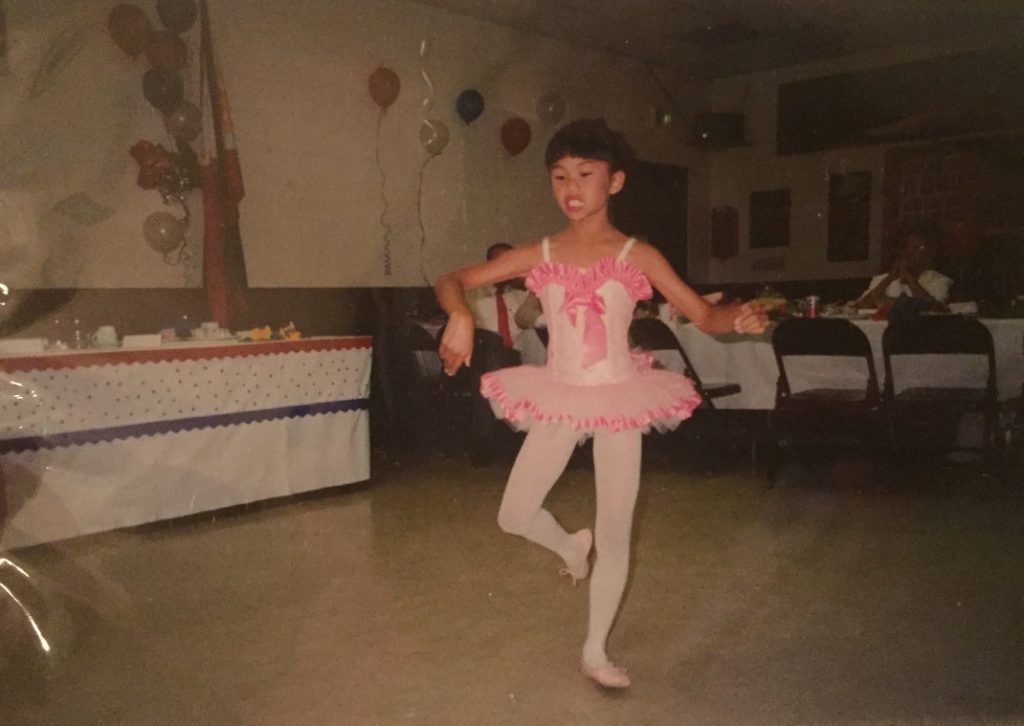
[1] Morrison, Toni. “A Humanist View.” Speech, Portland State University. May 30, 1975. Transcribed by Keisha E. McKenzie. Accessed November 2021. Quote timestamp: 35:46. Audio recording of lecture series available here. PDF of speech transcript available here.
[2] Vuong, Ocean. Interview with Krista Tippett for podcast On Being at On Air Fest, Brooklyn, New York. March 8 2020. Accessed November 2021. Quote timestamp: 57:00. Audio recording available here.
Cover image by Manjula Varghese
Suggested Citation
Sagisi, Suzette. 2021. “Without explanation.” In: Moving Interventions 1:
Ambiguous Potentials // Performative Awakenings, December 2021. Edited by / Herausgegeben von: Sarah Bergh and Sandra Chatterjee, with Ariadne Jacoby (CHAKKARs – Moving Interventions), copyedited by: Veronika Wagner. Published by / Veröffentlicht von CHAKKARs – Moving Interventions.
About the author
Suzette Sagisi is a Filipinx-American dance artist born and raised in California. Her company credits include Sandra Chatterjee, Hope Mohr Dance, Maurya Kerr’s tiny pistol, dazaun dance, Brice Mousset, James Alsop, Academy of Villains, Gerald Casel Dance Co., and Katie Faulkner’s little seismic, among others. She has danced for music artists such as Beyoncé and Fabolous, and has appeared on shows such as MTV’s Made and America’s Best Dance Crew. Suzette holds a bachelor’s degree from UCLA and a master’s degree from Tufts University, both in Philosophy. She serves as a Board Co-Chair of Hope Mohr Dance and resides in Berlin, Germany.
You can reach Suzette at sagisi@gmail.com or on IG @suzettesagisi


